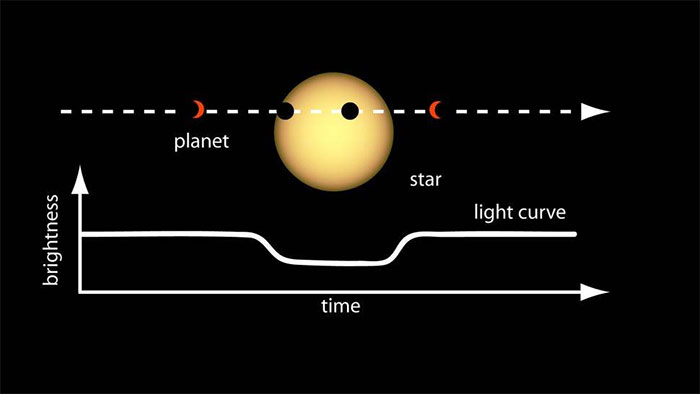Scientists all over the world can find a certain planet and predict whether it is suitable for the development of life or not by the method of celestial transit.
Many people wonder if astronomers observe and find strange planets when they are thousands of light years from Earth? According to LiveScience, for the past few decades, scientists have used the celestial body transit method to identify a certain planet. This improves your chances of discovering exoplanets and knowing that somewhere in the future will find aliens and special creatures in a distant world.
Since 1999, scientists have often used celestial transit to detect planets rotating a certain sun. This method is based on a very simple principle which is the “passage of the stars”. It is a phenomenon that occurs when at least one celestial body passes in front of another object in the sky, covering a small part of the rear celestial body.
Normally, scientists will detect a planet by measuring the brightness of the stars on which the planet orbits. However, when a planet is discovered, no one knows if there is life on it and then they have to observe more times.
According to NASA, most of the exoplanets (a common word for exoplanets in our solar system) known to humans were discovered by celestial transit. Large, extremely powerful telescopes such as the Kepler Space Telescope or the Exoplanet Survey Satellite (TESS) can detect a planet around and attenuate the light from the host star over time. The above method can be used to find planets orbiting stars thousands of light years away from us.
From the above method, scientists can estimate the magnitude of a planet based on the light it blocks from the orbit of its host star. At the same time, the size of the planet’s orbit can also be calculated based on the time that the host star’s light is attenuated.
In addition, the size and temperature of the host star, or the distance from the planet to the host star, also provides more information about its fitness for life. Not only that, the celestial transit method can also allude to the atmosphere of an exoplanet. During movement, light from a star is filtered through atmospheric molecules. Scientists will conduct research to identify things like oxygen and methane in the exoplanet’s atmosphere. However, the factors mentioned above are often quite vague, and astronomers need dozens of observations using celestial transit to be able to confirm which element is present in the atmosphere of this planet.
However, it should also be noted that the method of transit of celestial bodies requires certain conditions. This only happens when three heavenly bodies are on the same line. For example, a person who performs the method of transit on the celestial body of the Earth can only accomplish his task when the Earth, the planet observing him, and its host star are in a straight line.

There are rare cases where a transit could have up to four celestial bodies lying on the same line. The last recorded event took place on June 27, 1586, when Mercury passed through the Sun as seen from Venus. At the same time, from Saturn, Mercury and Venus were visible through the sun.
Over the years, the passage of celestial bodies with the observation of the passages of host stars of exoplanets has been the main means of “chasing” planets that are foreign to us. HD 209458b is the first exoplanet discovered by transit observation.


